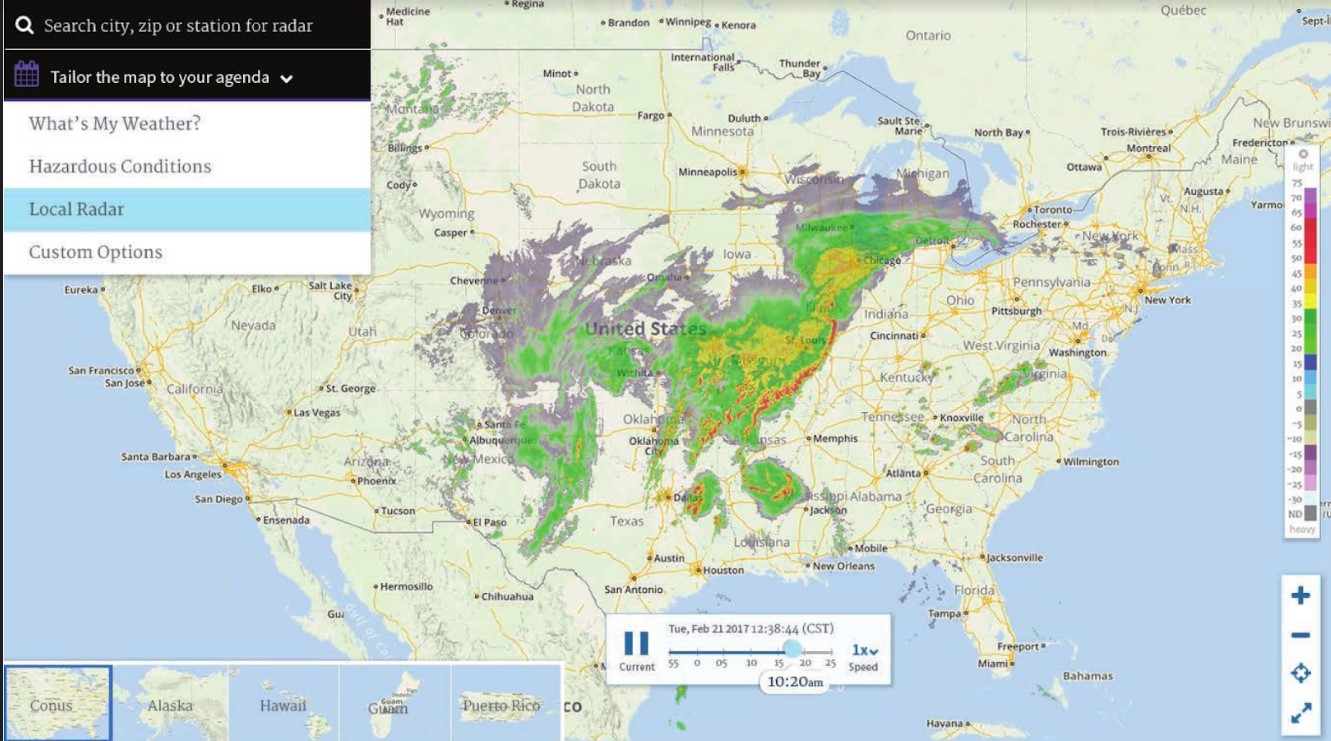
High winds and very dry conditions will continue to produce elevated to critical fire weather conditions over portions of New Mexico and far western Texas through Saturday. Heavy snow will continue in the Central Rockies Heavy rain, flooding, and severe thunderstorm risks increase from the Southern Plains into the Lower Missouri Valley this weekend. Read More >
Jackson, KY
Weather Forecast Office
Some users of NWS radar displays have begun receiving messages about the use of Adobe Flash in the display. Flash is scheduled to be discontinued toward the end of this year (2020), so web browsers have begun to alert users of this upcoming event.
The NWS's radar.weather.gov website has been the face of NWS radar data since 2003. The site routinely receives around 1.75 million hits on an average day and hundreds of millions of hits per day during active weather. The face of technology has changed dramatically throughout the last decade. By 2018 81% of Americans 13 years and older owned a smartphone. These devices have changed how and where we browse the internet. By 2018 mobile devices generated more than half of all web site traffic worldwide.
 The radar web site is not mobile-friendly in its current form and some of the displays use Flash. So, in response to these dramatic changes, this spring the NWS will replace the existing site and features with the following:
The radar web site is not mobile-friendly in its current form and some of the displays use Flash. So, in response to these dramatic changes, this spring the NWS will replace the existing site and features with the following:
An example of the planned display is shown at right (subject to change).
In the meantime, we do have a non Flash-based version of the radar displays. This can be accessed from the regular radar page by clicking on the "Go to: Standard Version" link near the top left part of the screen. Or, you can use the following link:
https://radar.weather.gov/radar_lite.php?rid=jkl&product=N0R&loop=yes
(Article originally published by NWS Central Illinois & NWS Louisville)
Warnings/Hazards
Decision Support - Outlooks
Current Weather Hazards
Hazards Criteria
Weather Story Graphic
Recent Storm Reports
Submit a Report
Forecasts
Decision Support - Forecast
Aviation Forecasts
Fire Weather Forecasts
Hourly Weather Forecast
Activity Planner
River Forecasts
Forecast Discussion
Current Conditions
Regional Radar
Decision Support - Current
Rivers and Lakes
Hourly Airport Weather
Local Radar
Satellite
Kentucky Mesonet
Past Weather
Local Climate Info
Temp/Precip Summary
How Much Rain Fell?
How Much Snow Fell?
Past Weather Events
Drought Information
Local Coop Observers
US Dept of Commerce
National Oceanic and Atmospheric Administration
National Weather Service
Jackson, KY
1329 Airport Road
Jackson, KY 41339
606-666-8000
Comments? Questions? Please Contact Us.

